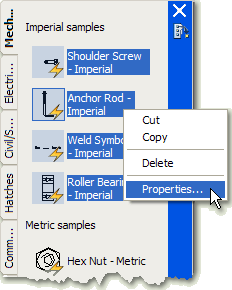Tutorials
CADTutor tutorials are all original and specifically designed to get you working with AutoCAD and other applications as knowledgeably as possible. We don't believe in providing only quick step-by-step tutorials like other sites. Our tutorials are comprehensive and aim to give you a deeper understanding and a better learning experience. See the AutoCAD tutorials page for more information.
If you can't see what you're looking for on this page, take a look at the list of all tutorials and don't forget that there's lots more content in the Michael's Corner section of the site.
We're always on the lookout for good content. If you have a tutorial or an article that you'd like to see published on CADTutor, get in touch using the contact form.
Tutorials of the Moment
The most recently viewed tutorials
Render Scene Dialog
|
3D Tree Exercise
|
|
Last visited: less than one minute ago |
Last visited: less than one minute ago |
|
Entering Survey Data using AutoCAD
|
Animation
|
|
Last visited: less than one minute ago |
Last visited: less than one minute ago |
Featured Tutorials
Tutorials we think you'll like
AutoCAD 2010: Starting a Command
|
AutoCAD 2010: Ribbon Basics
|
|
Last visited: 9 hours ago |
Last visited: 7 hours ago |
|
AutoCAD 2010: The User Interface - Part 1
|
AutoCAD 2010: Getting Ready for 3D
|
|
Last visited: 1 hour ago |
Last visited: 3 hours ago |
Tip of the Day
Easily set properties for multiple blocks in Tool Palettes

Lots of people think that when you have blocks saved in a Tool Palette, you have to each individual block to apply custom settings. What if you have 20 blocks and you want them all to have the same setting? Well, just hold Ctrl and highlight the blocks you want within the Tool Palette, then right click on any of the selected blocks to apply global settings.
Also, you can hold the Ctrl button to select your first block, then hold the Shift button to select the last block, then right click on any of the selected blocks to apply a global settings. Makes things much easier than one at a time.
Missed a Tip?
Did you miss yesterday's tip? Maybe you forgot to drop by or maybe you don't visit over the weekend. If so, you can now see all the tips published during the past week. Also, if you have a tip you'd like to share with us, you can post it on our forum and if we like it, we'll publish it here.
Local Navigation
Featured Tutorial
This tutorial introduces the 3D Mirror tool. This is similar to the normal 2D Mirror tool but it enables you to define a mirror about and plane in 3D space and there are a number of command line options to help you define that plane. Running time: 3min 17sec
Sponsored Links
The Basics
- Dual Dimensions in a Dim…
- UCSICON Options
- "Best of" Basics: Irreg…
- Tool Palette Basics
- Original Dimension Value
- Possible Solutions to th…
- Avoid Using 'Standard' i…
- Shorten the Plot Scales…
- Update the Source File B…
- User Increment Angles fo…
- Drawing Information
- 'Sign Language'
- Rotate with the Copy Opt…
- Use the INSERT Osnap on…
- To or From the Current L…




